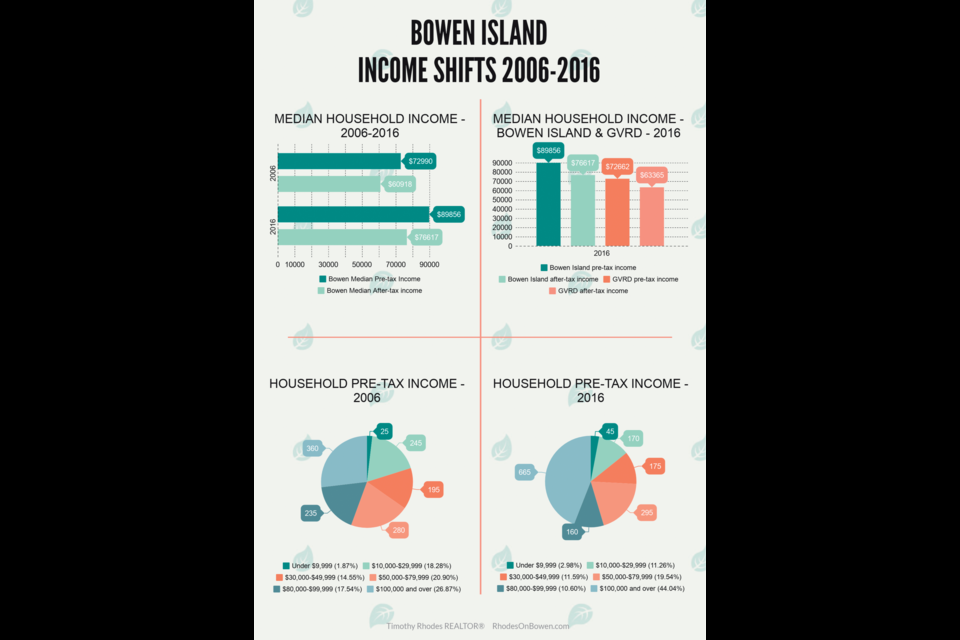People always talk about how much Bowen is changing. Realtor Tim Rhodes decided to dive right into the latest census data to find out how.
Continued from last week’s paper.
INCOME SHIFTS
The 2016 median household after-tax income exceeded 2006 pre-tax income.
During the decade, the median pre-tax household income on Bowen Island increased from $72,990 to $89,856 (23 per cent) while median after-tax income was up from $60,918 to $76,617 (26 per cent).
The number of households with annual pre-tax income less than $10,000 increased slightly (1.5 per cent) and 54 per cent of households have income of $80,000 or greater.
Going forward, unless the island provides more rental and diversity of housing (attached, multi-family), most new residents to Bowen Island will need household incomes of $100,000 or more to qualify for a mortgage. While this may create an appealing customer base for Bowen businesses, it also creates significant problems when the businesses are looking for on-island employees.
HOUSING
The number of private dwellings increased by 275 over the decade.
Two hundred and seventy-five homes (17 per cent of dwellings) were built between 2006 and 2016, and 11 per cent were constructed prior to 1960. The 2016 Census reported the mean value of dwellings on Bowen Island at $798,887 and the average value at $942,977, and values have increased since the census.
Fifty-four per cent of households are supported with a single-earner income and 45 per cent with a two-earner income.
Eighty-two per cent of households are occupied by owners and 18 per cent are rented, an increase of 1 per cent for renter-occupied dwellings over 2006. In Metro Vancouver, where the housing crisis is in the news daily, 36 per cent of households are occupied by renters.
In conclusion...
Islanders’ median age is older, we are more educated, and earn more than a decade ago. Our rate of population growth during the last half of the decade was 1.4 times that of Metro Vancouver, and our rate of increase in property values tracked that of Metro.
Given the pressures the mainland brings to bear and the resulting demographic shift it drives, the Island will need enlightened development and growth management going forward to maintain our historic socio-economic diversity.



